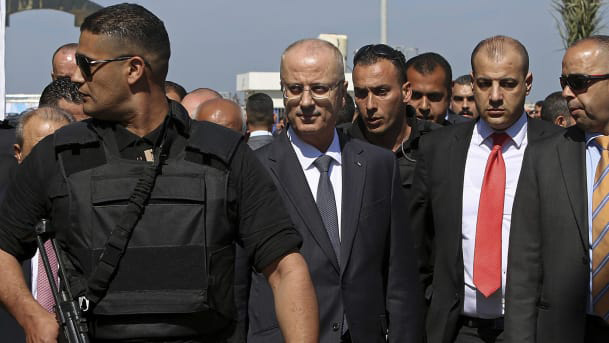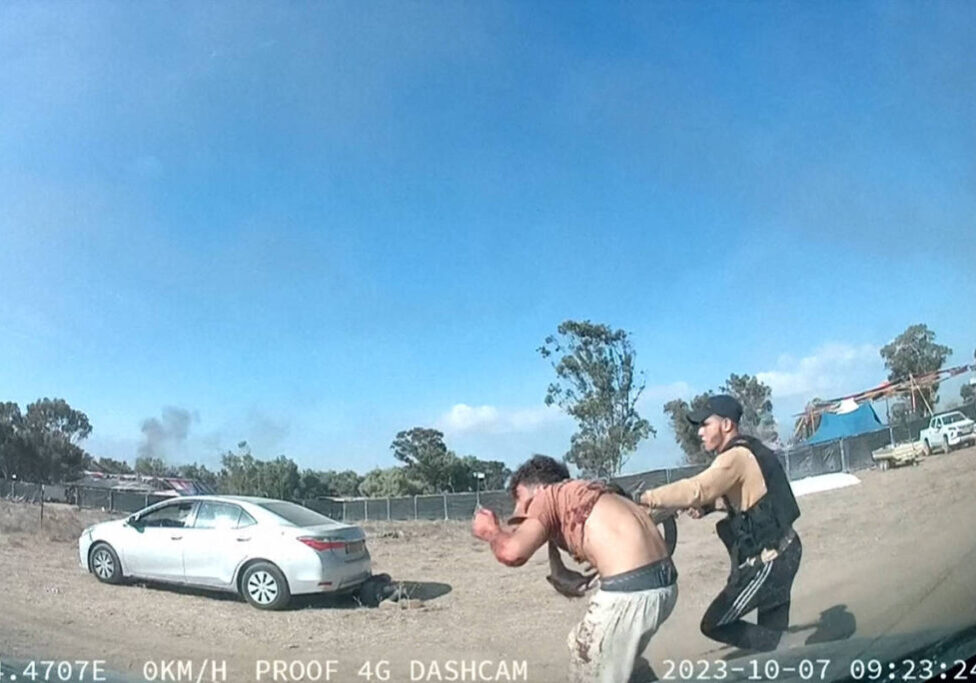Australia/Israel Review
The aftermath of an assassination attempt
Apr 3, 2018 | Jonathan Schanzer

Jonathan Schanzer
Palestinian Authority (PA) Prime Minister Rami Hamdallah emerged visibly shaken but unscathed after an assassination attempt on March 13 in the Gaza Strip. The soft-spoken former academic arrived in Gaza to open a sewage plant and attend some political meetings. He had barely crossed into northern Gaza when his convoy, which included Palestinian Intelligence Chief Majid Farraj, was rocked by two 33-pound bombs. Seven security guards were wounded and three cars were damaged in the attack.
The Middle East media, never lacking in creativity or conspiracy theories, is now rife with nutty explanations for what happened. Some say it could be President Mahmoud Abbas’ longtime political nemesis Muhammad Dahlan behind the attack. Dahlan, now in political exile in the UAE, has fired back, saying that Israel “is the only beneficiary” of the attack. Still others blame Qatar and Iran, two countries that historically back the Hamas terrorist group, for destabilising the Gaza Strip.
Hamas, of course, is the most obvious culprit. The animosity between Hamas and the Fatah-backed PA dates back to the first Intifada (1987-1993), but the tension reached its zenith in 2007, when the Gaza Strip erupted in civil war. Hamas conquered the coastal enclave in a bloody civil war that claimed the lives of more than 100 Palestinians and left more than 500 wounded.
The two sides have tried to reconcile periodically, but to no avail. The factions, both unwilling to forgive or forget, are locked in a Machiavellian power struggle. The internecine conflict continues. In fact, Hamdallah was slated to engage in reconciliation talks before the convoy attack forced him to return to the West Bank.
Hamas denies culpability, which is almost as surprising as its assertion that Israel was behind the assassination attempt. However, some imply that Hamas’ foes in the PA perpetrated the attack to show that Hamas cannot control its own territory. In other words, a false flag operation, of sorts. You can’t make this stuff up.
Hamas has since launched an investigation into the attack. The terrorist group-turned-government reportedly arrested several employees of two cellular companies used by the bombers (the bombs were detonated via cellphone).
The “Khan Younis Cops” routine will be entertaining, but we will probably never learn who tried to kill Rami Hamdallah. Amidst a hyperactive news cycle that could benefit from an injection of sedatives, interest among journalists is already flagging. Let’s face it: Hamdallah is Abbas’ low-profile yes-man who has never made his mark on Palestinian politics and probably never will.
The real story here is that Hamas is losing control over the territory that it claims to rule. This may come as a shock, but terrorist groups are not good at governance. And Hamas has proven this time and again. From security to education to sewage to religious freedom, Gaza is unravelling.
Meanwhile, under the direction of Egyptian President Abd al-Fattah al-Sisi, Cairo’s crackdown on smuggling tunnels has cut off a key source of cash, but also other products necessary to keep the impoverished territory functioning. To prevent a humanitarian disaster, the Israelis are doing what they can to help facilitate aid to the Gaza government, even when it comes from regional adversaries like Qatar and Turkey. But Israel’s lifeline is not sustainable. It’s a short-term attempt to stave off war.
In the long term, conflict is unavoidable. Hamas continues to divert what little assistance gets through to build underground bunkers and crude rockets, in preparation for the next war with Israel. To make matters worse, Hamas is not the only army on the battlefield. Gaza is teeming with other terrorist factions, including the Iran-backed Palestinian Islamic Jihad, and Sabirin – a new Shi’ite Palestinian group also backed by Iran. There is also a gaggle of radical Salafi groups, as well as the Popular Resistance Committees, to name a few.
Any one of these groups could have been responsible for targeting Hamdallah’s convoy. Any one of them might have a motive. And any one of them would be able to pull it off.
After more than a decade in power, Hamas has failed even to gain a monopoly on violence in the Gaza Strip, making it a place where diplomats and foreign officials visit at their own peril.
Jonathan Schanzer, a former terrorism finance analyst at the United States Department of the Treasury, is Senior Vice President for Research at the Foundation for Defence of Democracies.
Tags: Hamas






